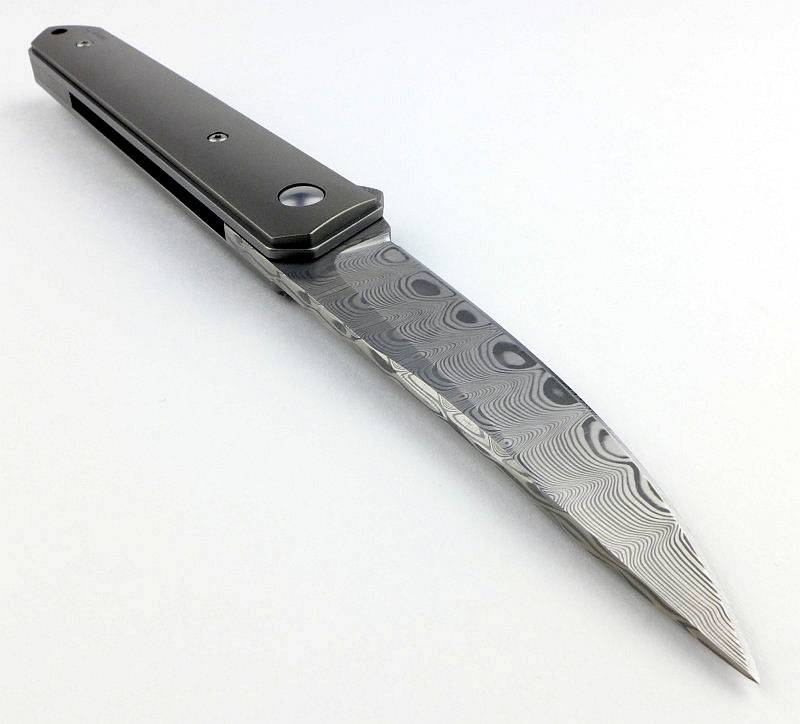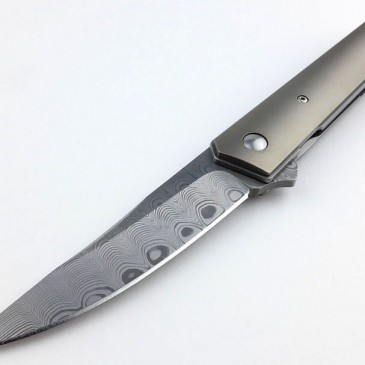The Böker Plus Kwaiken Flipper is one of Böker Plus’s most popular knives, and is the result of a collaboration with renowned knife maker Lucas Burnley. The Kwaiken Flipper is available in many variations of blade and handle materials. This review is looking at the Damascus / Titanium version.
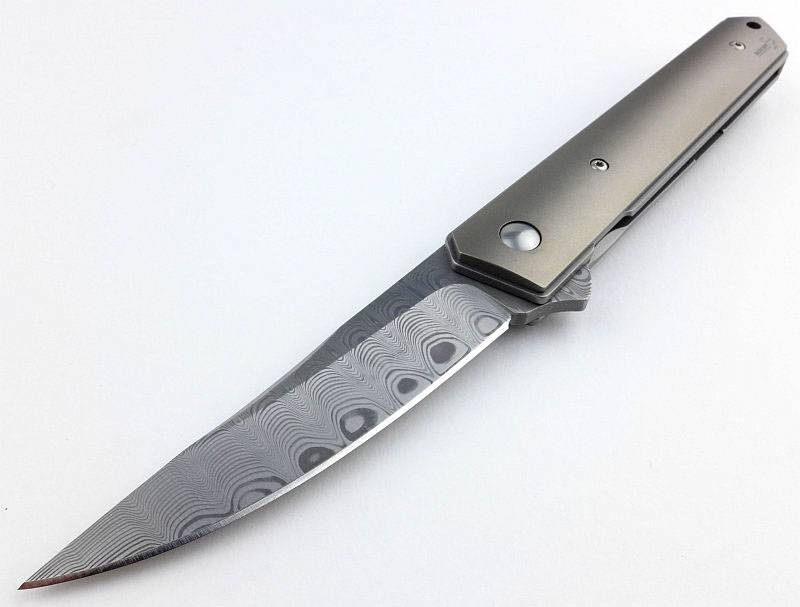
The Blade and Handle Geometry:
Most knives specifications have a basic description of the blade geometry, but in this section I will be taking a more detailed look at geometry and balance.
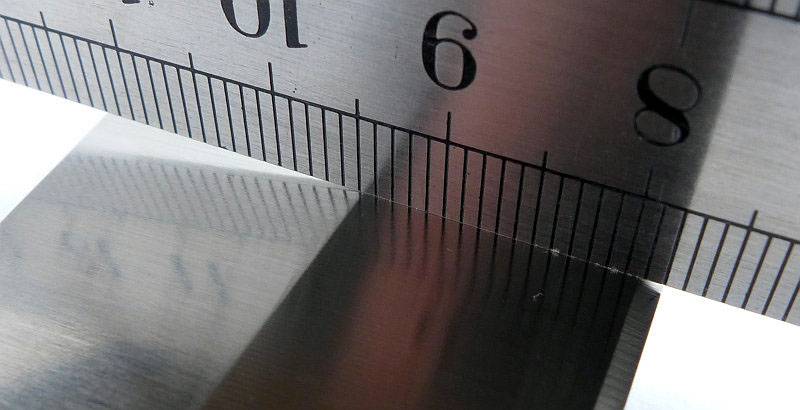
Using a set of gauges and precision measuring equipment including a Vernier protractor, callipers, fixed radius gauges and the unique Arc Master adjustable radius gauge (the one that looks like a crossbow).
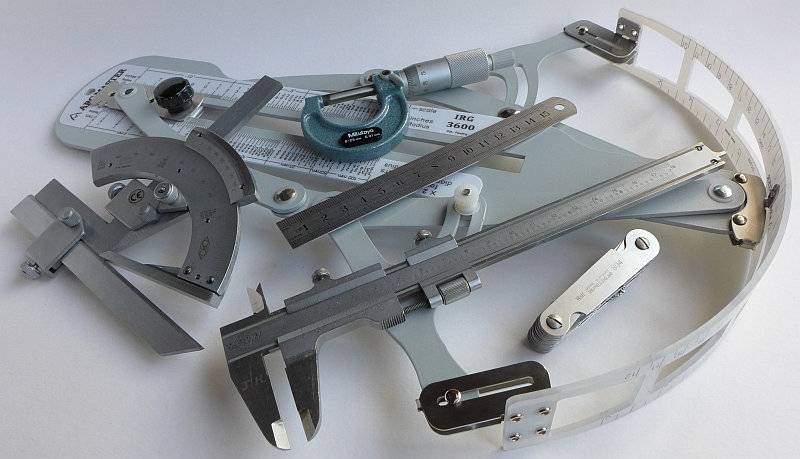
These measurements have been tabulated and are presented along with a few reference blades (8″ Chef’s Knife, 5.5″ Santoku and the popular Fallkniven F1).
Key aspects such as the primary bevel angle, grind type, blade depth, blade thickness, length, weight are detailed, along with balance information.
The ‘Balance relative to the front of the handle’ tells you if the knife will feel front heavy, or if the weight is in your hand (a positive value means the weight is forward of the front of the handle). The ‘Balance relative to the centre of the handle’ indicates how close to a ‘neutral balance’ the knife has in the hand.
In the case of full convex grinds the approximate centre of the grind is used for the primary bevel angle estimate.
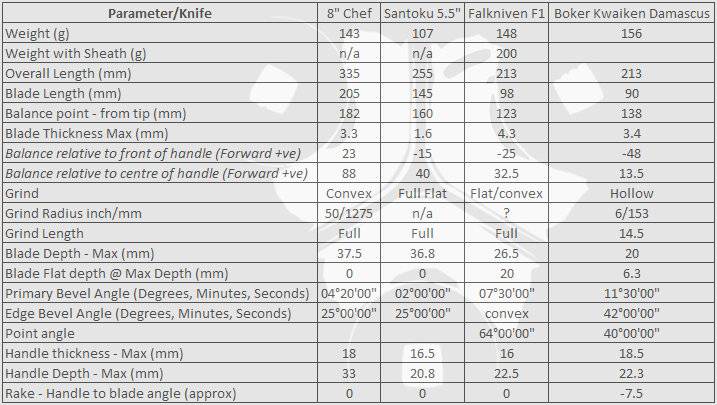
The blade is made from Odins Eye pattern DAMASTEEL martensitic stainless Damascus steel.
Explained by the Maker:
The reasons for certain design choices may not be clear when simply looking at an object, so this section is intended to give an insight into the thinking behind a design by speaking to the designer themselves.
Unfortunately I can’t always get time with the designer so will use this section to include relevant information about the knife and its designer.
This knife started as the distinctive Kwaiken fixed blade design created by Lucas Burnley from New Mexico. Lucas Burnley wanted to transfer the thin and narrow concept into a folding knife, without changing the proportions too much. Working with Böker, Lucas developed the Kwaiken folder in thumb stud and flipper varieties maintaining the unique character of the clean lines and sleek design
In keeping with the sleek design, the knife uses a hidden stop pin, IKBS ball bearing system and liner locking mechanism.
The Böker Plus Kwaiken flipper has been available in several other versions with a recent upgrade to VG-10, but this special edition is presented with the blade made from the Swedish powdered-metal Damascus steel (ie DAMASTEEL).
Before talking a little more about the exact steel used in this knife, here is a quick note about Damascus steel:
Damascus steel was considered the ultimate blade material in the Middle Ages, and is named after the Syrian city of Damascus, a once important commercial centre for knives and swords with blades made from this special composite steel.
Ignoring its decorative appeal, Damascus is a composite steel, (made of at least two steels with different properties). These steels are folded over each other again and again creating a layered structure which is clearly visible when etched. Combining the steels in this way allowed their respective strengths (edge holding and toughness) to overcome their weaknesses (easily blunting and brittleness) resulting in a far superior steel. The more layers in the final steel, the better they work together.
The properties of Damascus steel can now be recreated in a single modern steel so it is no longer necessary to use Damascus steel. Damascus steel is still highly desirable for its historical and decorative appearance.
DAMASTEEL is a Swedish brand of specialist manufacturer of stainless Damascus steel.
DAMASTEEL’s products are all made from a martensitic stainless Damascus steel which is a powder based steel with the two alloys RWL 34 and PMC 27. They are both variations of the martensitic stainless steel 420 type with a minimum of 13 percent chromium content.
For the Kwaiken flipper, Böker Plus have chosen the ‘Odins Eye’ pattern. When etched to bring out the detail of the layers, the RWL34 shows as Bright and the PMC27 as Dark.
A few more details:
The Kwaiken folder arrives in a sealed presentation box.
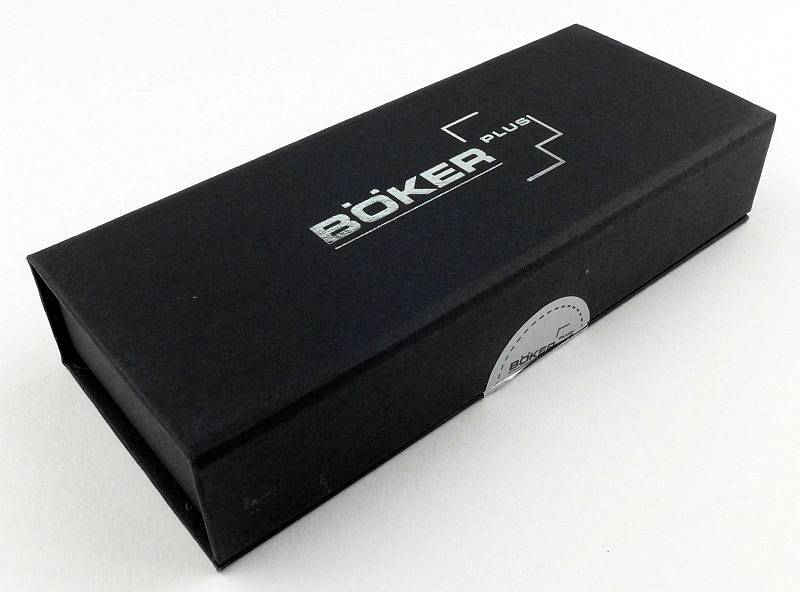
The box lid is held closed by a magnetic catch, and the knife is plastic wrapped and held in a foam liner.
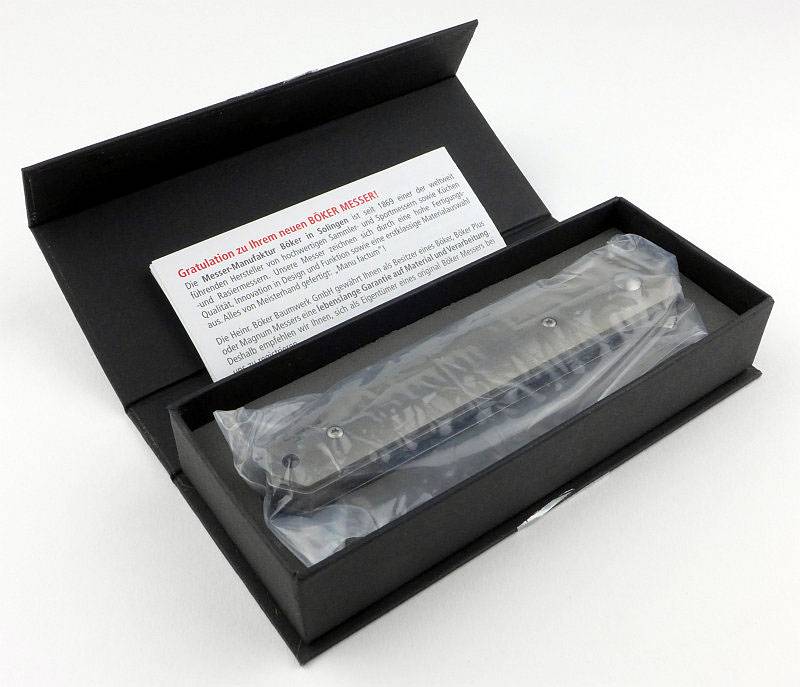
The first full view of the super sleek Kwaiken flipper fresh out of the box.
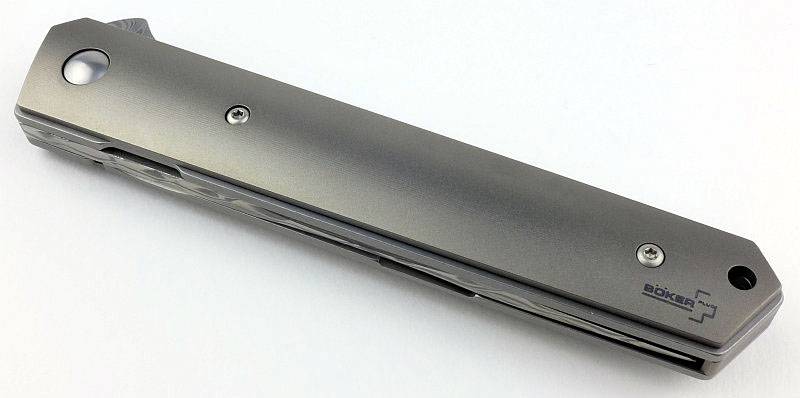
A couple of hints of something special. First the flipper is clearly Damascus steel, and secondly, the folded knife is sitting upright with the blade opening downward – not something you can do with most folding knives. Oh and let’s not forget the Titanium scales.
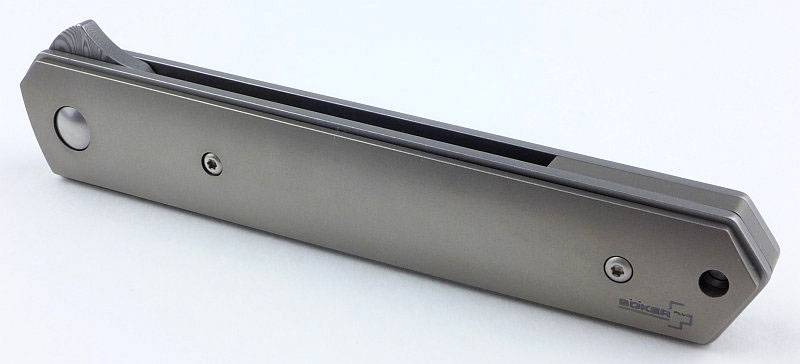
Yes that definitely is Damascus.
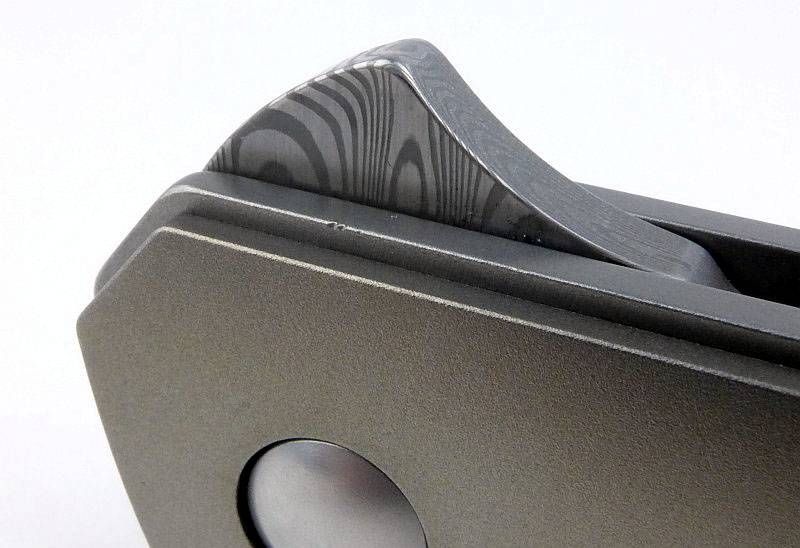
Turning it over to look at the spine of the blade and you can see it sits flush with the liners giving a completely flat profile. The only part of the blade protruding from the handle is the flipper.
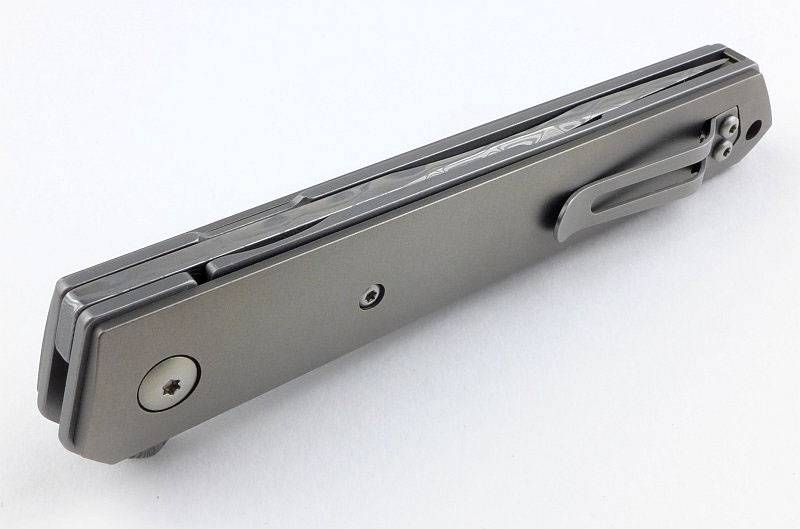
The small pocket clip is steel.
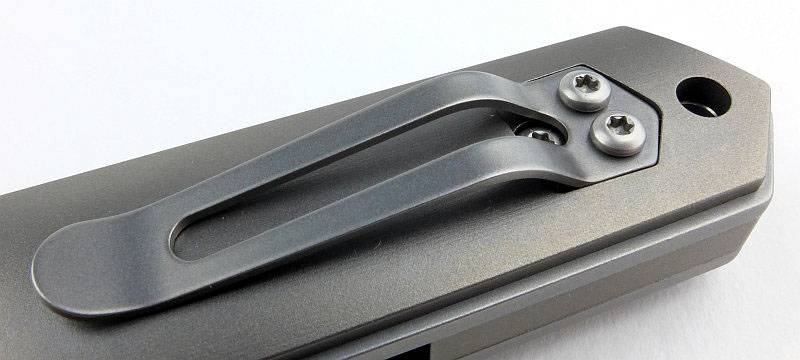
Looking down into the handles, there is still something we haven’t seen, a stop pin. This is because the Kwaiken folder uses a hidden stop pin which runs in a slot cut into the blade tang near the pivot, allowing it to be totally out of sight.
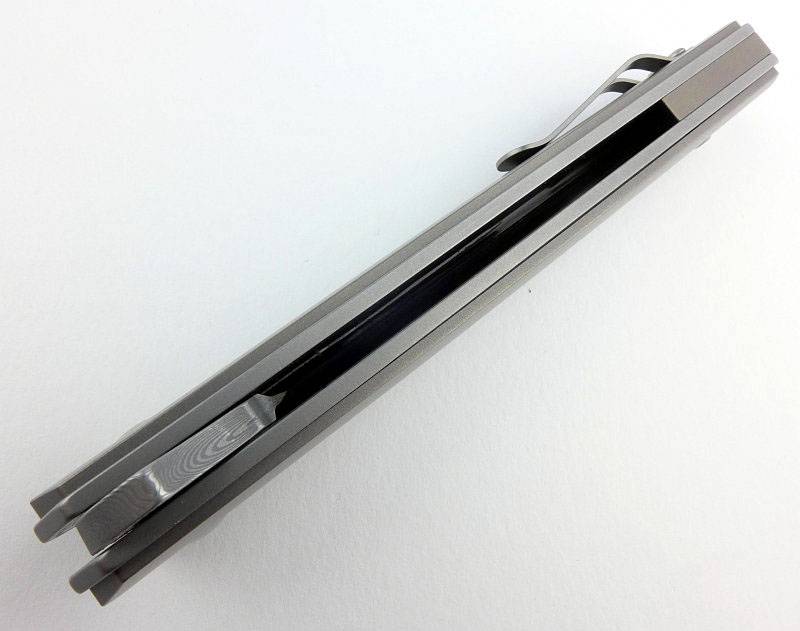
We can start to take in the details on the blade-side of the handle. The spine of the blade shows the Damascus pattern etched into it along with some sculpting. There is also the liner lock detail from its spring section to the lock release cut-out.
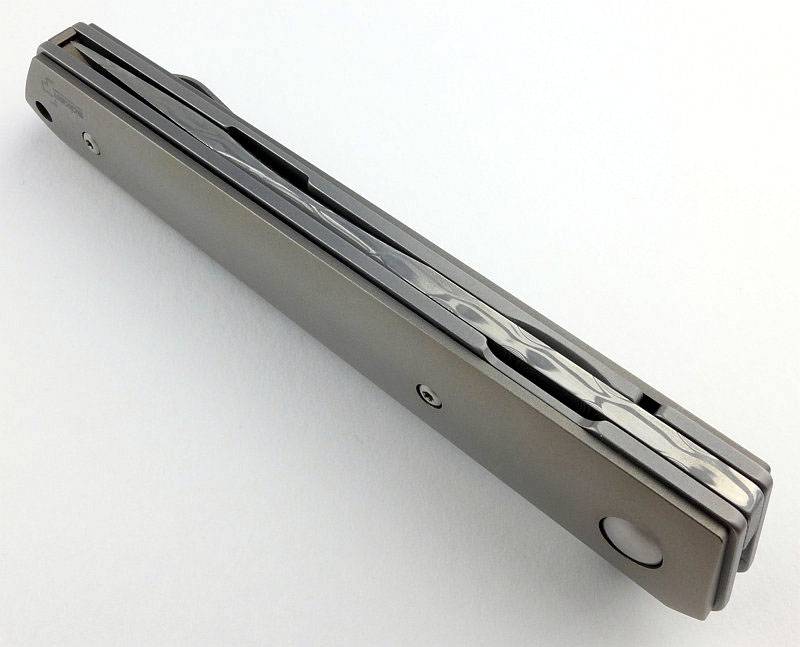
Moving closer there is just a small cut-out to give just enough access to the lock bar to release it, and the lock bar has a shallow bevel to ‘ease’ the corner of the lock bar where you press on it.
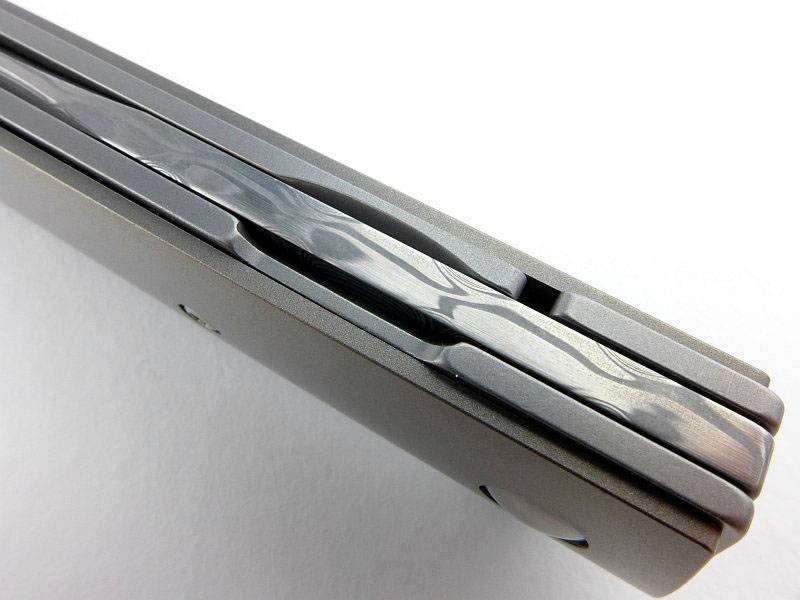
Two long scallops on the blade spine sit near the thinned liner which acts as the lock bar spring.
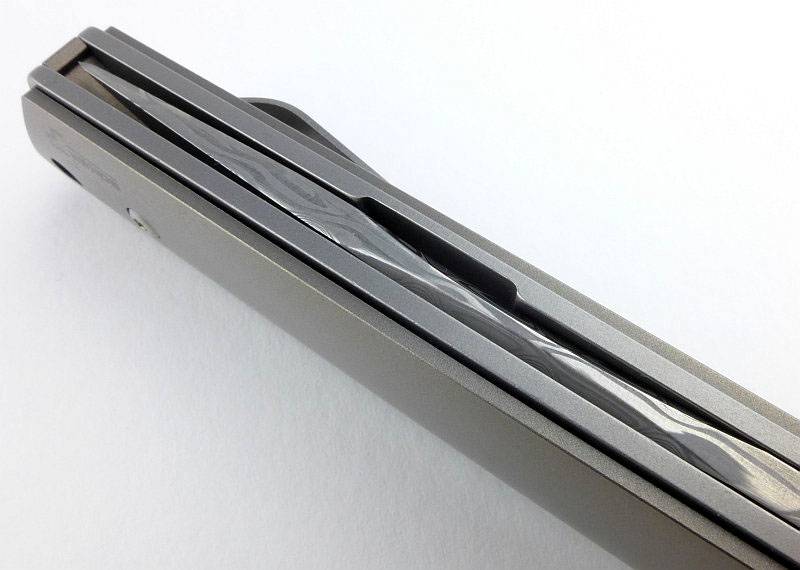
And the blade emerges…
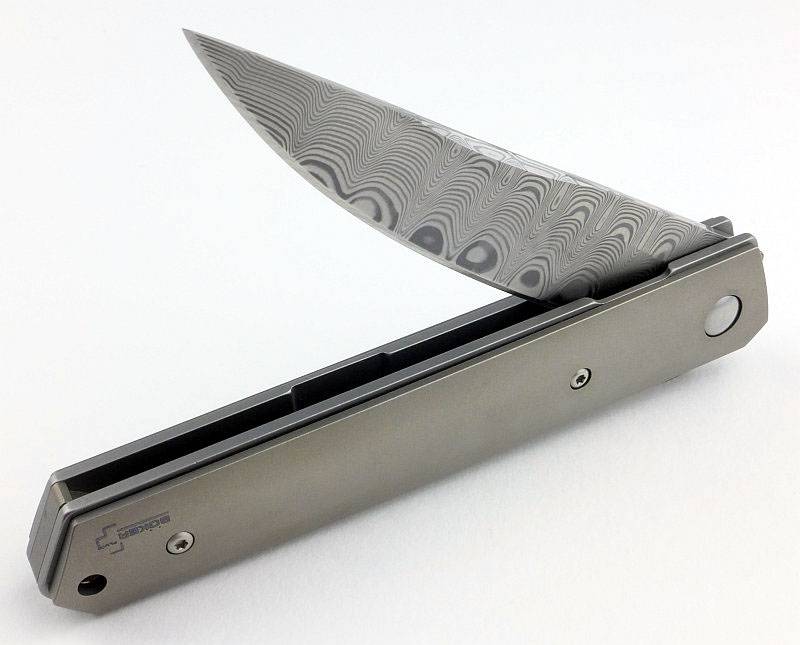
…allowing us to take in the beauty of that Damascus blade. The etching of the blade brings out the layers, but you can see how the polished edge conceals those layers. (To those not familiar with Damascus steel, it is only the etching that shows the layers, otherwise it would look no different.)
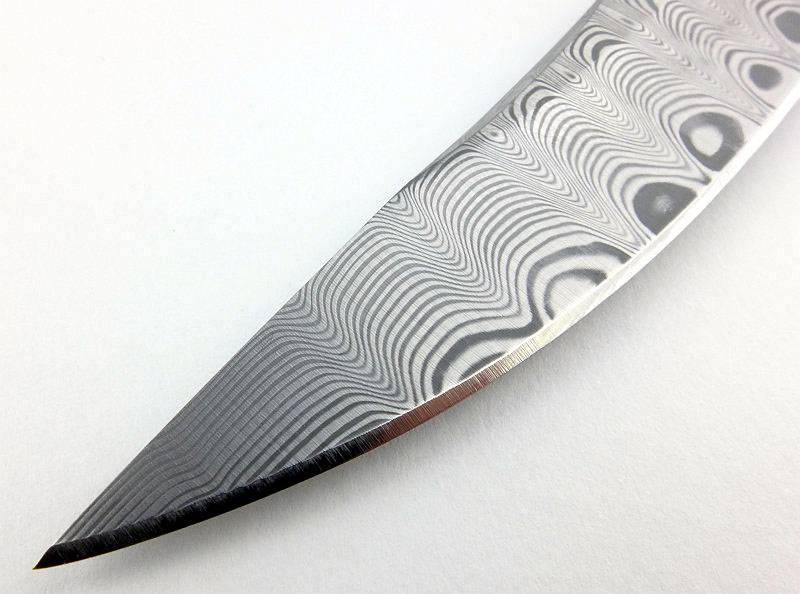
This image has several details of note. The blade has a sharpening choil – this is a favourite feature of mine. The entire blade side is etched including the flipper (the effect this has will be discussed later). You can see some diagonal grinding line remnants on the blade flat as well as some machining lines running along the Titanium handle scales.
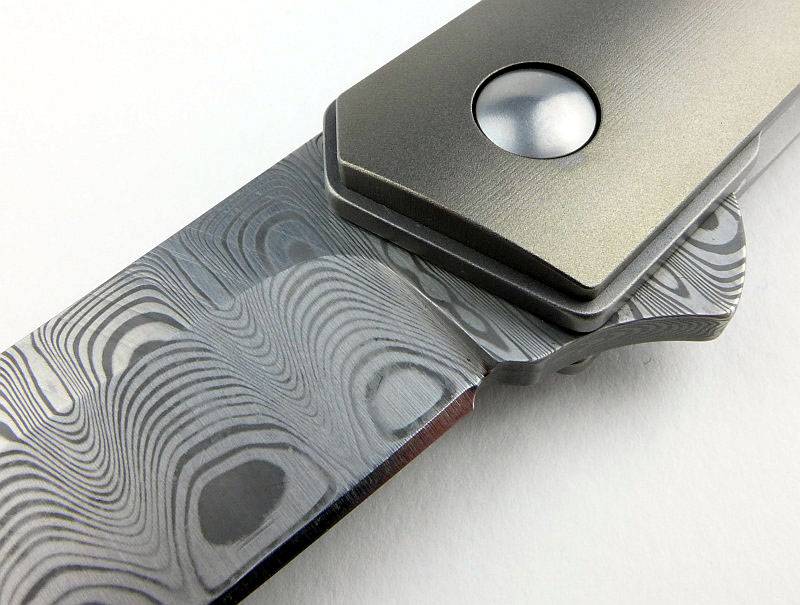
Looking very very closely at where the point sits when the knife is closed, you can see it is the tiniest bit off centre. However, for some reason this photo makes it look much worse than to the eye. You can also see a slight unevenness of the final edge bevel, but these are tiny details magnified significantly.
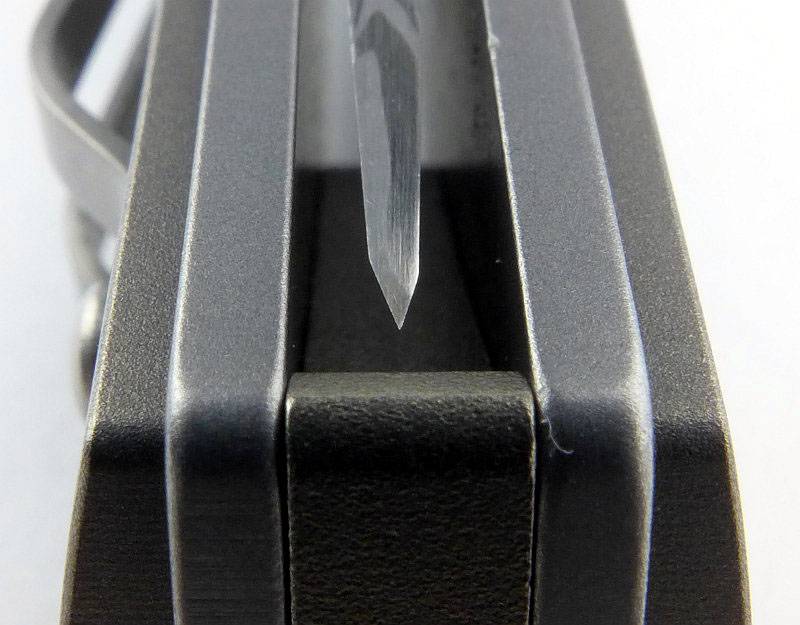
The Böker Plus logo is etched into the Titanium. It appears to be a laser etching but is not ‘cut’ into the surface, instead appearing mainly as a colour change. I can’t find the logo just by feeling for it.
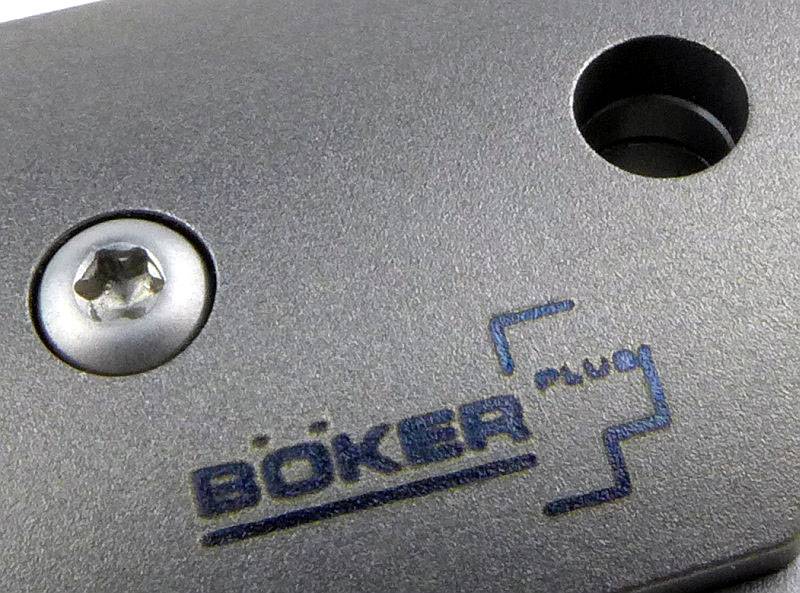
Now to concentrate on the lock and its engagement. Here the full lock-bar is shown from where it bends inward at the thinned section of liner, to the lock surface.
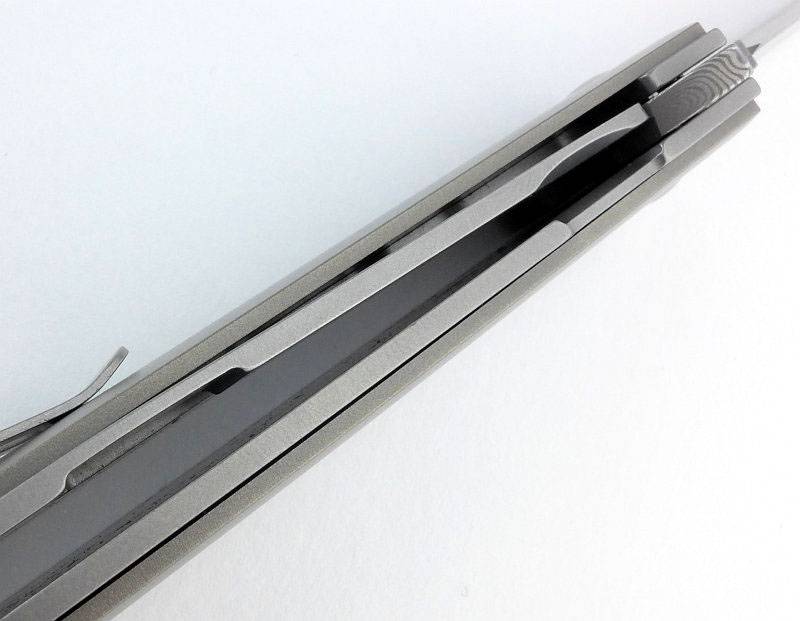
The lock bar does not quite get to the centre of the blade.
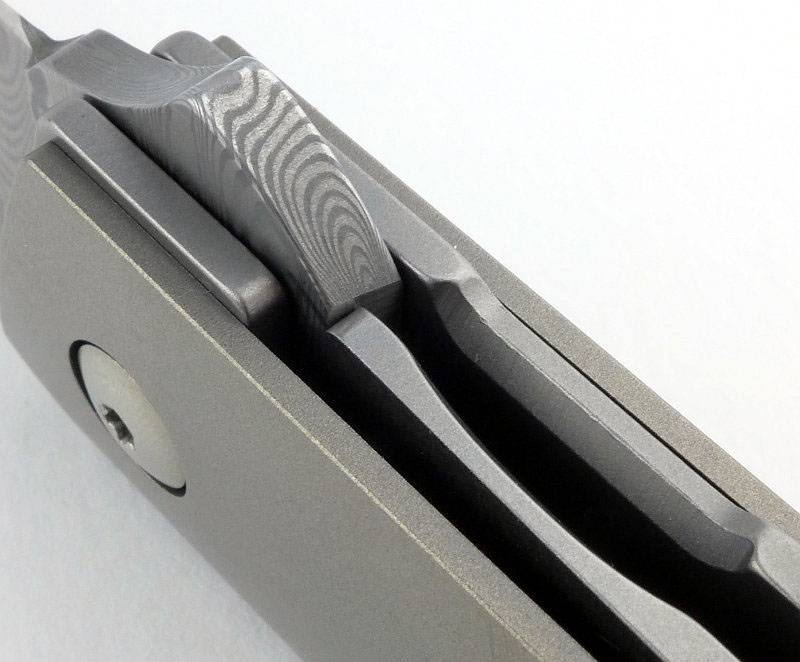
A view from the other side.
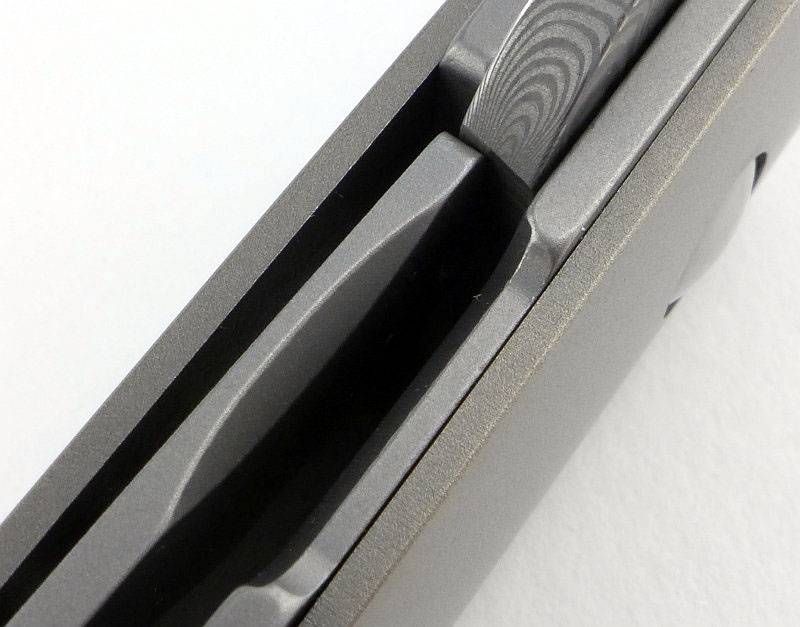
Having operated the lock quite a few times a set of marks show on the blade’s lock surface giving a better indication of the contact point.
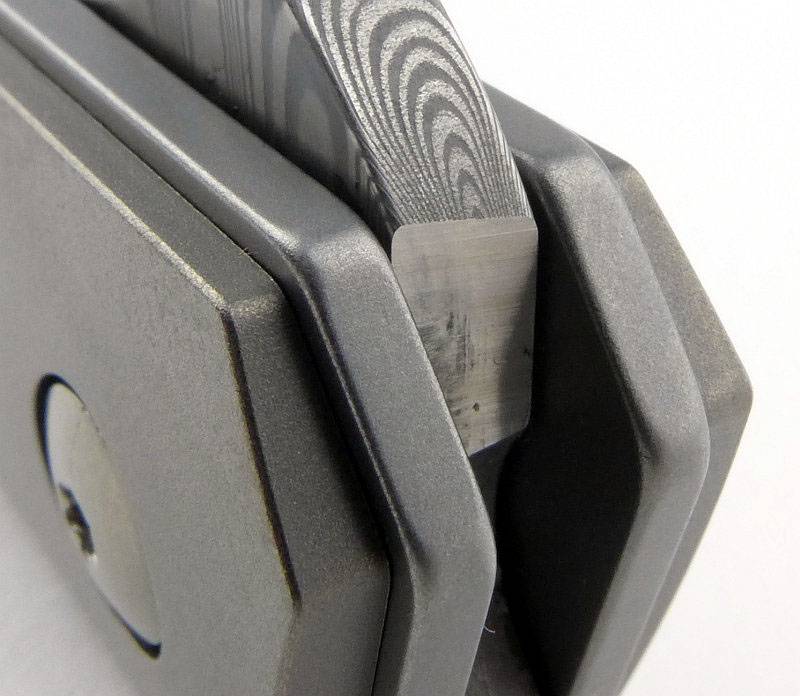
What it is like to use?
To try to describe what this knife is like to use, I need to go back to its ultra-sleek lines with a fully concealed folded blade.
Being so streamlined and being all metal, the Kwaiken feels relatively heavy, yet fine at the same time. In a similar way to the fusion of beneficial characteristics in the Damascus steel used for the blade, the Kwaiken flipper manages to give you the best of each of its characteristics with a reassuring weight and a handle that is slim, elegant and easy to hold.
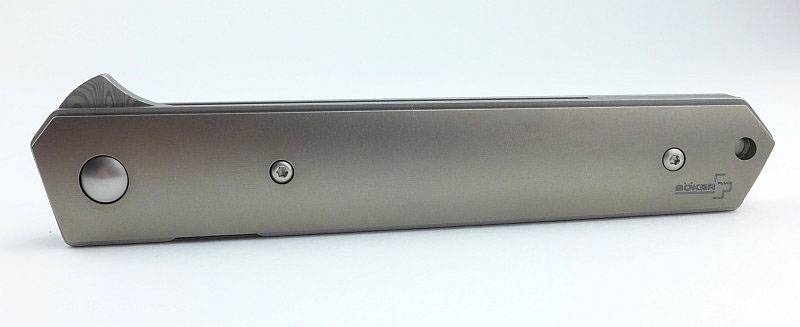
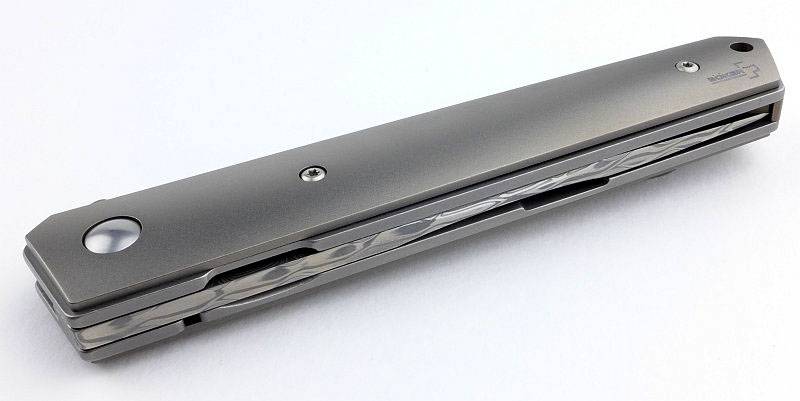
Flippers vary enormously in the smoothness of their opening. Böker Plus’s Kwaiken flipper is known for is silky flip, but in this photo I’ve gone in very close to look at the etched blade and flipper surface. Though the blade itself runs on an IKBS ball bearing, the lock-bar sits against the side of the blade tang inside the handle.
The lock-bar has a blade retaining detent and once the blade starts to open, the ‘ball’ part of this detent sits against the side of the blade and rubs over the surface. Due to this, the opening of the blade has a slightly gritty feeling as the blade rotates round into the locked position.
Holding the lock bar away from the side of the blade removes this gritty feeling straight away, and the more I flip the knife open, the smoother it is becoming. It is an unfortunate consequence of the Damascus etching and that the entire blade surface is etched. If you go for this version you will forgive this because you wanted this steel.
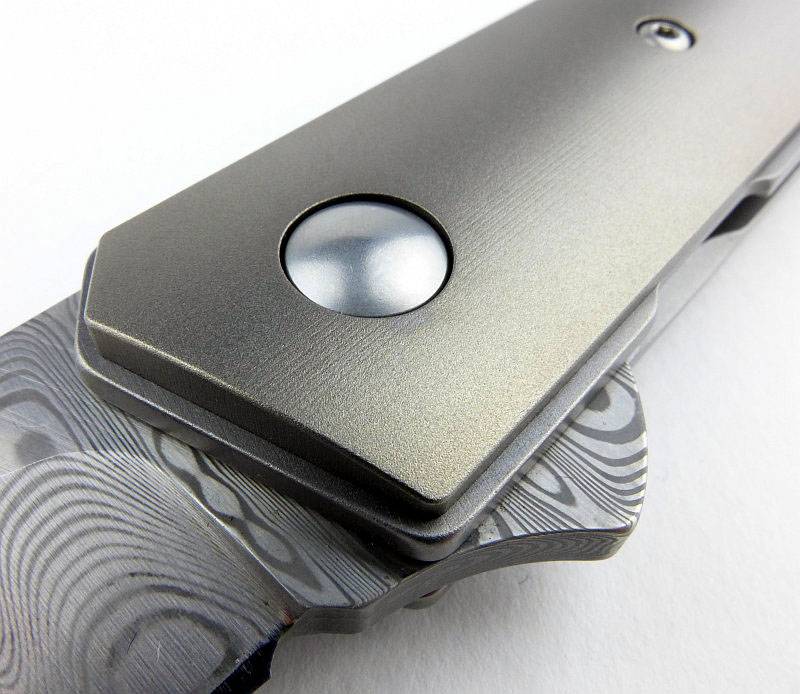
To give an idea of scale, the Kwaiken flipper is being shown next to a UKPK FRN. Also notice again the fully enclosed blade unlike the UKPK.
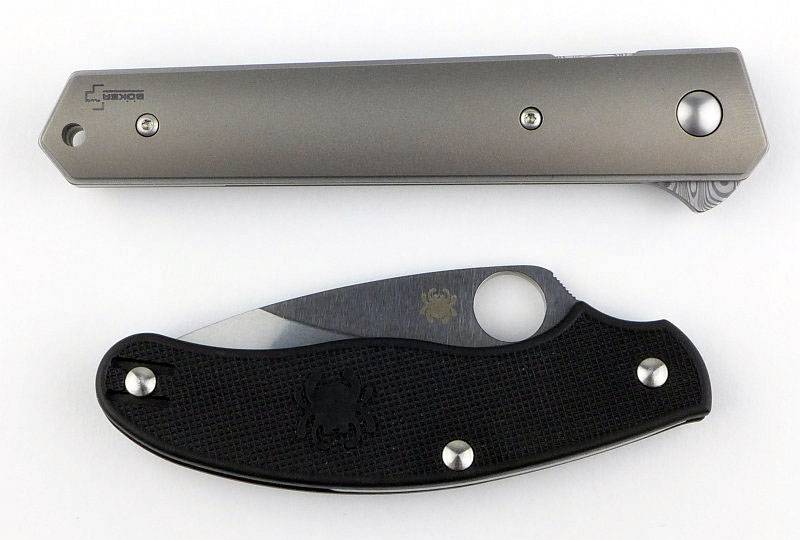
And with the blades open. Compared to the UKPK with its contoured grip, finger choil and negative rake, the Kwaiken looks straight, stiff and not very ergonomic, but don’t be misled by this. Actually it sits very well in the hand, not for extended periods of heavy cutting, but for general EDC work it is fine.
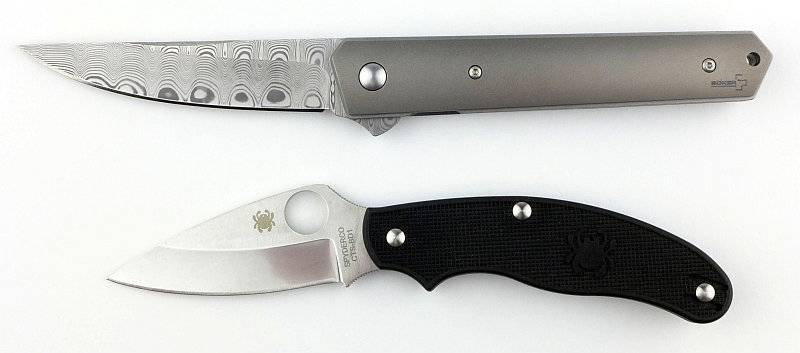
For a narrow blade, the blade stock is quite thick and this does affect the ease with which you can make deep slicing cuts. As with any hollow ground blade, the first part of the cut is easy, but as the cut depth increases the blade starts to bind. Having said this I think the spine thickness suits the style and length of blade perfectly and I wouldn’t change it.
The point is great for piercing cuts, in fact with its slim blade the Kwaiken is excellent at deep piercing cuts
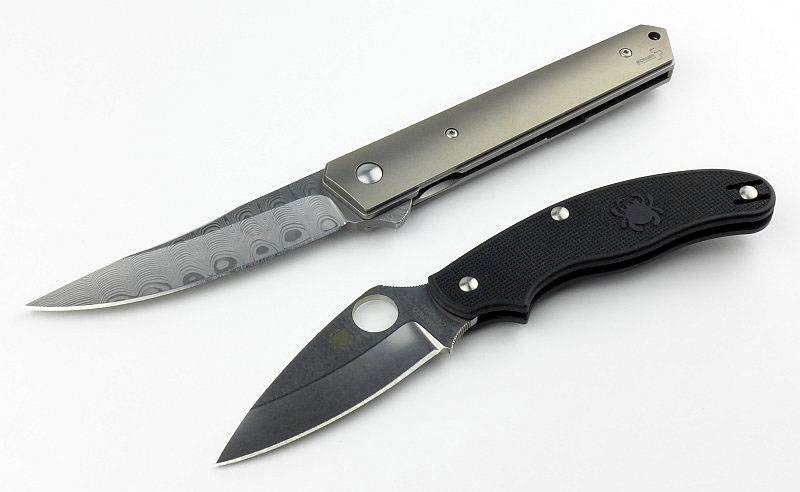
The Kwaiken flipper is an outstanding piece of design and I take my hat off to Lucas Burnley for creating a timeless masterpiece which, thanks to Böker Plus, is within reach of just about everyone.
Review Summary
The views expressed in this summary table are from the point of view of the reviewer’s personal use. I am not a member of the armed forces and cannot comment on its use beyond a cutting tool or field/hunting knife.
Something that might be a ‘pro’ for one user can be a ‘con’ for another, so the comments are categorised based on my requirements. You should consider all points and if they could be beneficial to you.
| _______________________________________________ | _______________________________________________ |
| Things I like | What doesn’t work so well for me |
| _______________________________________________ | _______________________________________________ |
| Sleek lines | Slight roughness in the opening due to Damascus etch |
| Fully enclosed blade | Relatively heavy |
| DAMASTEEL blade | Small pocket clip |
| Easy flip | |
| Ball-bearing pivot |
